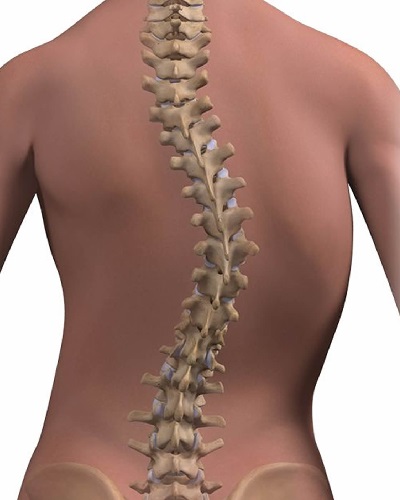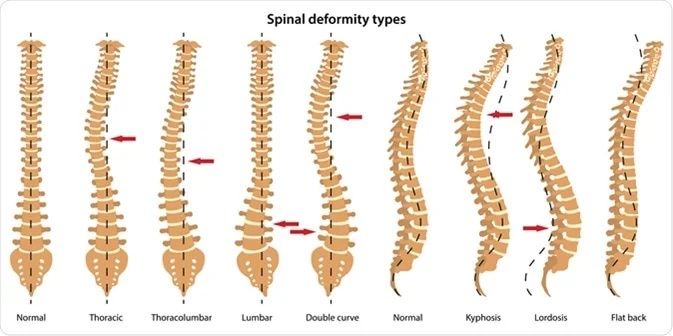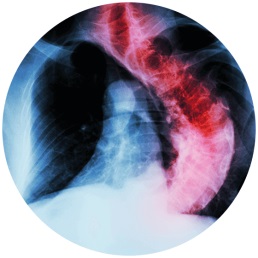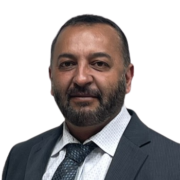Spinal Deformities Symptoms & Treatment Options
When viewed from the front, a healthy spine will appear straight up and down. When viewed from the side, it will adopt a gradual S-curve. Your spine should bend backward from where the head sits on the neck. Continuing its arc through the center of the chest, a healthy spine will curve slightly forward on the lumbar spine. When an individual’s genetics or a traumatic event interrupts typical development during childhood or later life, a spinal deformity may result.
The phrase “spinal deformity” is a generic term that medical professionals have subdivided into many, much more specific conditions. In general, this term refers to any condition of the spine that results in an unnatural curve or shape. The causes and effects of this abnormal curvature can differ in source, direction, and severity. For example, Kyphosis, sometimes referred to as “hunchback,” is an exaggerated backward curve of the upper back. Kyphosis can occur as a result of congenital, degenerative, surgical, or pathological (disease-induced) reasons. So, for one person, their kyphosis may result from age-related degeneration or compression of the spine over time. For another person, their kyphosis may result from damage to the vertebrae following an accident or fall, growth of lesions or persistent abnormal posture that progresses into Kyphosis.
Major Types of Spinal Deformities
Medical professionals usually characterize spinal deformities according to the type of abnormal curvature that the spine adopts.
The most common of these include:
Kyphosis: Kyphosis is a spinal deformity characterized by an exaggerated backward curve of the thoracic spine (upper back). Sometimes referred to as “hunchback,” this condition often develops as a result of osteoarthritis or osteoporosis and in some cases compression fractures. Older adults, especially females, are particularly at risk for developing this type of spinal deformity.
Lordosis: Lordosis, also called “sway back,” is an exaggerated forward curve of the lumbar spine ( generally speaking of the lower back). This condition results in the appearance of the abdomen jutting forward, and the buttocks jutting outward. Obesity, excessive kyphosis, or spondylolisthesis can all trigger lumbar hyper-lordosis.
Scoliosis: Scoliosis is a more common condition, characterized by a sideways curvature to the spine. Described as a frontal or coronal plane S-curve of the spine, the onset of scoliosis most often occurs before puberty. Signs of scoliosis include: uneven hips, protrusion of one of the shoulder blades, uneven shoulders, and eventual twisting of the spine.
Flatback: Flatback is a condition in which the natural curve of the lower back diminishes. This leads to a straight, or flat lower back that cause a ripple effect in the upper spine. Individuals may appear hunched over and sometimes tightness can occur in the hamstrings as the legs or knees compensate for the lack of lower back curvature to maintain the bodies natural weight balance.
Less Common Types of Spinal Deformity
Less common, but nonetheless significant, forms of spinal deformity also include:
Scheuermann’s Disease: This condition appears in children and adolescents. Like kyphosis, this disease causes an exaggerated hump in the thoracic spine. Rather than resulting from degeneration, however, disruptions in the growth of spinal vertebrae cause this disease. This condition can lead to considerable pain and disability.
Postsurgical Deformity: Spinal surgery can also result in a variety of deformities. Usually, postsurgical deformities occur when a spinal fusion procedure was unsuccessful in fully fusing the targeted bones or if the spine did not heal properly following surgery. Surgical failure can result in further curving of the spine with concurrent pain and stiffness at the surgical site.
Worried that you might have one of the conditions listed above? Our board certified spine surgeon ranks among the best spinal deformity surgeons, call us to schedule an appointment today.
Diagnostic & Imaging Techniques for Spinal Deformities
Although many spinal deformities can be seen by the naked eye, physicians often use imaging techniques such as standing X-rays, MRIs, and CT scans to help gather additional information. Your physician will use these images to fully view the spine and the conditions that cause your abnormality. Information from imaging techniques can be used to develop a plan for treating your condition.
If the deformity is causing compression of the spinal cord, or the spinal nerves, then pain and other distressing symptoms may be experienced. For example, you may experience localized pain, radiating pain to the limbs, numbness, stiffness, limited movement, tingling, and even compression of internal organs or loss of bladder or bowel control. These symptoms may require surgery in order to rectify, especially if one is experiencing compression symptoms. Please seek immediate medical attention if you are experiencing loss of movement, paralysis, or loss of bowel or bladder control, as this may be a medical emergency.
Symptoms of Spinal Deformities
Your condition may be asymptomatic and may or may not require treatment. With a variety of causes leading to spinal deformities, the signs and symptoms of these conditions can also vary significantly. Symptoms will especially depend upon the type and severity of the spinal deformity that is present. For some, the condition will exist without any symptoms at all. Furthermore, pain is not usually a major symptom of spinal deformities unless arthritis, spinal fractures, or other inflammatory conditions cause the spinal deformity.
If your condition is moderate to severe, you may notice visible changes in spinal structure. One of the main diagnosing factors is that, unlike other spinal conditions, a physician will sometimes be able to detect a spinal deformity through visual inspection alone. Others will be able to notice the condition, which can aid in a speedier diagnosis. This visibility, however, can also be alienating to the person experiencing the deformity. The psychological effects of a spinal deformity can be a challenging aspect of the condition.
More about Dr. Matin
Spinal Deformities Symptoms & Treatment Options
Spinal deformities can be treated by Dr. Martin, give us a call to schedule an appointment.
We will provide different options of treatment.
Spinal Fusion Surgery
Most often used for conditions such as scoliosis and kyphosis, your physician will use rods, plates, and screws to mechanically join one or more vertebrae and to straighten any collapsed spinal structures. This process will straighten the curves associated with scoliosis.
Decompression Procedures
Decompression surgery involves making space within a spine that has collapsed from spinal deformity. During this procedure, your physician will use a variety of methods, such as laminectomy or foraminotomy, to remove structures that are compressing the spine.
Osteotomy
An osteotomy is a procedure that involves the removal of bone structures. This can entail the removal of an entire vertebra or just a section of one, in order to correct the angle at which bones sit together. This procedure is commonly used to treat scoliosis or flatback.
Physical Therapy
A physical therapist can guide individuals in strength-building exercises and loosening stretches. For some, posture lessons may be needed to learn how to properly sit, stand, or walk. Deep tissue massage is another beneficial therapy that can complement physical therapy.






